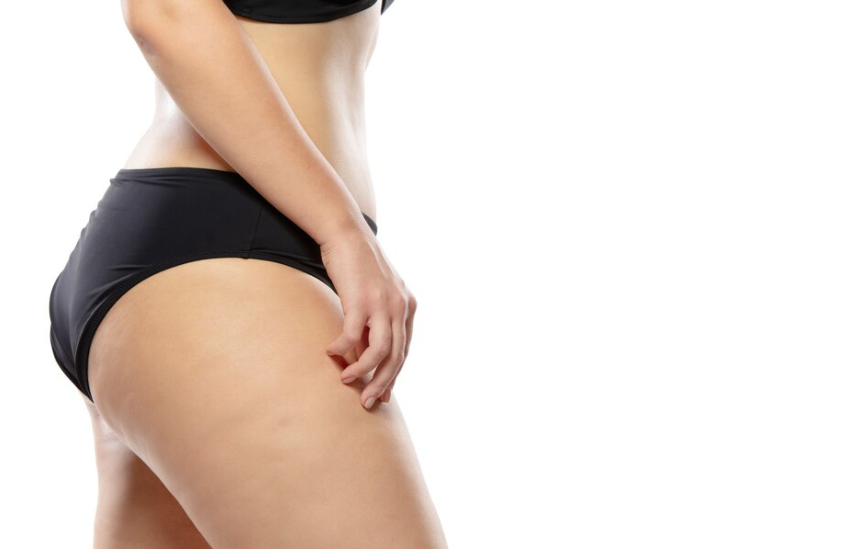Can You Really Beat Cellulite?

©️ wavebreakmedia_micro / Freepik
Congratulations! You have won the lottery… of cellulite! Don’t worry, this “prize” affects most of us.
Cellulite, a bane for many, is that common condition that creates a dimpled, lumpy texture on the skin, often likened to “orange peel skin” or “cottage cheese skin.” It typically appears on the thighs, buttocks, and hips, although other areas can be affected as well.

Who Gets Cellulite and Why?
The good news? You are not alone. Cellulite is incredibly common, affecting up to 98% of women. While it’s a cosmetic concern, not a health risk, it can be a source of frustration.
Men, on the other hand, are far less likely to develop cellulite due to the structure of their connective tissue and fat cells.

The exact cause of cellulite remains a bit of a mystery, but researchers believe several factors play a role, including:
- Hormonal Influence: Estrogen, insulin, and other hormones are thought to be involved in fat cell development and storage, potentially impacting cellulite formation
- Gender Differences: Women are more prone to cellulite simply because of the way their connective tissue and fat cells are arranged compared to men
- The Role of Genes: Genetics play a part in factors like metabolism, fat distribution, and circulation, all of which can influence cellulite risk.
- Age and Skin Changes: As we age, our skin loses elasticity and becomes thinner, making cellulite more noticeable.
Lifestyle Choices and Cellulite
While diet and lifestyle aren’t direct causes, a diet high in unhealthy fats, refined carbohydrates, and salt, coupled with a lack of fiber, may be linked to a higher risk of cellulite. Similarly, a lack of exercise, smoking, and prolonged sitting or standing may also contribute.

Treatment Options: A Temporary Fix
There’s no magic bullet for cellulite, and no treatment offers a permanent cure. However, the American Academy of Dermatology (AAD) has reviewed some techniques that may provide temporary improvement in the appearance of cellulite:
- Acoustic Wave Therapy: This treatment uses sound waves to target cellulite-affected tissue.
- Laser Treatment: A minimally invasive procedure, laser treatment uses lasers to break up tissue and stimulate collagen production, potentially smoothing the skin.
- Subcision: This technique involves a dermatologist inserting a needle under the skin to break up the connective tissue bands that contribute to the dimpling.

- Vacuum-assisted Precise Tissue Release (VAPTR): This device utilizes small blades to cut the connective tissue bands, allowing the underlying tissue to fill out and create a smoother appearance.
- Carboxytherapy: This treatment involves injecting carbon dioxide gas under the skin. The theory is that this improves circulation and potentially reduces cellulite.
Taking Charge: Maintaining a Healthy Lifestyle
While there’s no guaranteed way to prevent cellulite, maintaining a healthy weight through a balanced diet and regular exercise can help. This means incorporating plenty of fruits, vegetables, and whole grains while limiting unhealthy fats, refined carbohydrates, and added salt.
Exercise is a key player, too. Aim for regular physical activity that includes both cardio and strength training. This combination can help improve circulation, build muscle tone, and potentially reduce the appearance of cellulite.

You can also try dry brushing, the bristles help remove dead skin cells from the surface of the skin, which can leave it feeling smoother and softer. These are some additional lifestyle changes that may be beneficial. Remember, even though cellulite is common, you can take control of your health and feel confident in your skin.

It’s Important to Note:
- Always consult with a board-certified dermatologist before undergoing any cellulite treatment. They can discuss your individual situation, recommend the most suitable options, and manage expectations.
- Be wary of unrealistic claims and miracle cures. If something sounds too good to be true, it probably is.
- Focus on healthy habits for overall well-being. While these habits may not eliminate cellulite, they can contribute to a healthier and improve the appearance of your skin.
You might also like to read: 7 Essential Tips for a Healthy Lifestyle


